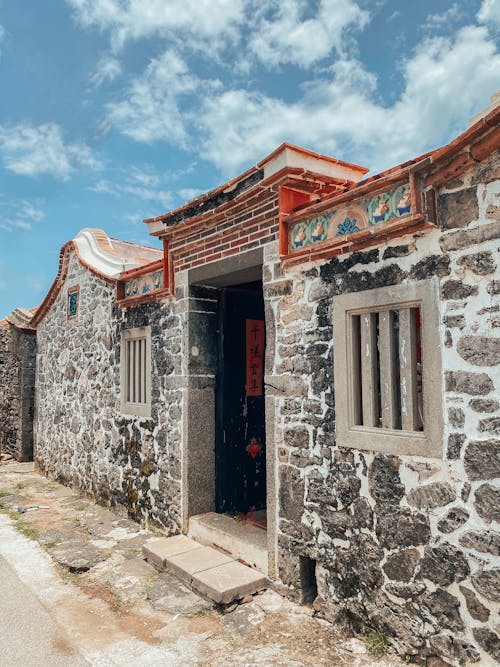Why Prefabricated Mobile Houses are the Future of Sustainable Living
Prefabricated mobile houses represent a transformative shift in sustainable living. These efficient and versatile homes promise eco-friendly solutions to modern-day housing challenges. With their innovative construction methods, they offer reduced waste and energy efficiency. The rising importance of sustainability in housing makes these mobile structures increasingly popular. This article delves into their design, benefits, and real-life applications, highlighting the role of prefabricated mobile houses in the quest for environmentally conscious living.
Design Innovations in Prefabricated Mobile Houses
Innovations in design are a hallmark of prefabricated mobile houses. These homes utilize modular frameworks that can be easily customized to cater to personal preferences and local climates. The design process often incorporates passive solar principles, maximizing natural light and reducing energy consumption. Furthermore, by leveraging contemporary architectural styles, prefabricated mobile houses appeal to a broad audience. The fusion of aesthetic and functionality ensures that these homes do not compromise on style even while being cost-effective. Through sustainable material selection, builders can further elevate the ecological quality of these homes. Every aspect of design promotes a lifestyle that minimizes environmental impact while enhancing livability. This forward-thinking approach positions prefabricated mobile houses as leaders in sustainable housing design.
Enhancing Energy Efficiency with Prefabricated Mobile Houses
Energy efficiency is a central feature of prefabricated mobile houses. These homes often come equipped with energy-efficient appliances and systems, which contribute significantly to lower utility costs. Moreover, the insulation used in prefabricated mobile houses is often designed to provide better thermal regulation, reducing the need for heating and cooling. Homeowners can choose renewable energy options like solar panels to further enhance their ecological footprint reduction. Not only do these features promote a cost-effective lifestyle, but they also resonate with environmentally conscious consumers. As preferences shift towards greener living, the energy-efficient characteristics of prefabricated mobile houses become a major selling point. Essentially, investing in a prefabricated mobile house aligns both personal and ecological financial strategies.
The Role of Prefabricated Mobile Houses in Urban Planning
Urban planning increasingly recognizes the value of prefabricated mobile houses. These homes offer flexible solutions for housing shortages in dense urban areas. Their modular nature allows for quick assembly, which can be crucial in addressing immediate housing needs during crises or rapid population growth. Additionally, cities can design these homes to incorporate communal spaces, fostering community engagement. As urban centers strive for more sustainable living practices, prefabricated mobile houses can contribute significantly by utilizing small plots of land efficiently. Local governments may also implement favorable policies that promote the construction of prefabricated mobile houses to meet growing demands. Therefore, the role of these homes in urban planning extends far beyond mere construction; they represent proactive solutions to contemporary housing challenges.
The Impact of Prefabricated Mobile Houses on Neighborhood Dynamics
Prefabricated mobile houses enhance neighborhood dynamics through their communal possibilities. When designed with community spaces in mind, they foster a sense of belonging among residents. People living in prefabricated mobile houses often share resources, whether it's through communal gardens or shared workspaces, promoting collaboration. Additionally, these homes tend to create aesthetically appealing neighborhoods, which can enhance property values. As communities evolve, the presence of prefabricated mobile houses may lead to increased interest from diverse demographics, enriching local cultures. This dynamic reflects a broader shift towards more interconnected communities. Consequently, prefabricated mobile houses do not just add to a neighborhood; they actively contribute to its social fabric.
Real-Life Applications of Prefabricated Mobile Houses
Real-world examples illustrate the versatility and effectiveness of prefabricated mobile houses. Numerous case studies showcase their deployment in disaster relief efforts, offering quick, temporary housing solutions for those affected. Additionally, many urban developments are embracing prefabricated mobile houses as part of sustainable, affordable housing initiatives. Countries like Sweden and Japan have adopted these homes as viable replacements for traditional urban housing, showcasing their adaptability. Each application underscores the significance of prefabricated mobile houses in promoting adaptability in housing solutions. As the demand for flexible living arrangements continues to grow, these homes showcase their potential across various scenarios. Ultimately, real-life applications prove that prefabricated mobile houses are not just a trend but a viable future for housing.
Conclusion: Embracing a Sustainable Future with Prefabricated Mobile Houses
The trajectory of prefabricated mobile houses illustrates a growing alignment with sustainable living. Their innovative designs, energy-efficient attributes, and adaptability make them a smart choice for future homeowners. As we move toward an increasingly ecological-centric society, prefabricated mobile houses stand out as essential contributors to sustainable urban living. Homeowners choosing these innovative structures not only invest in their futures but also in the well-being of the planet. The journey toward a sustainable housing future is not just a possibility but a reality, vividly embodied by prefabricated mobile houses.
